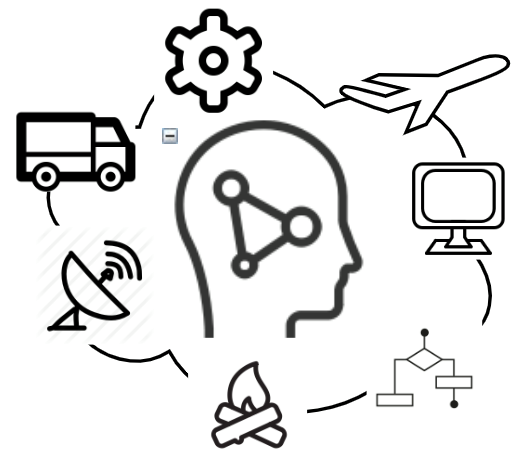
What is AI
Artificial Intelligence is already a part of our everyday life, we don’t think about it all the time, we don’t notice it around us all the time, but it is there..you like it or not, and we use it ..you like it or not.
How it started
It really started in 1950 when Alan Turing introduced the Turing Test:
a human evaluator would judge natural language conversations between a human and a machine … If the evaluator cannot reliably tell the machine from the human, the machine is said to have passed the test..
Our-days system which could achieve that is called ‘General Purpose AI’ and it is the ultimate goal of all the work going on in this domain.
You can google a lot of resources on the history of AI if interested.
In a few words, AI went through a few cycles of ups and downs and we now live in a 3rd period of AI boom. We will see if it will be the final (and hopefully not ‘final destination’)
AI as a science
First of all, AI is not just all about computer science or IT. It combines the knowledge and discoveries from a number of the sciences:
- Philosophy: formal logic and reasoning
- Mathematics: most of modern ML (machine learning) techniques are heavily based on mathematics like probability etc.
- Economics: game theory etc.
- Neuroscience: neural networks, one of the most robust AI approach is modeled after human brain structure
- Psychology: discoveries in cognitive psychology inspired some methods and techniques used in AI
- Computer engineering: of course computers and IT are our tools to build AI
- Control theory and cybernetics: modern view of AI as systems that behave optimally
- Linguistics: natural language processing techniques and methods .. Hey, Alexa ..tell me more about tat
Objective and approach
Different people at different times used different criteria to describe AI systems. They can be broadly devised in the 4 following categories:
- Thinking Humanly: machines with minds, in the full and literal sense
- Thinking Rationally: mental faculties through the use of computational models
- Acting Humanly: creating machines that perform functions that require intelligence when performed by people
- Acting Rationally: design of intelligent agents.
The modern commonly accepted approach is ‘Acting Rationally’. Really, what do you want from your digital assistance: being human-like or being rational..
As for me, there are enough crazy people in the world, I want at least my AI assistant to be rational ..otherwise how good it is.
And on other hand, what use of a service which just ‘thinks’ but cannot ‘act’ on my behalf. If it is smart enough to understand that I want to book a hotel then why not do it for me?
So, again, the modern approach to AI is very practical: build some agents which can act rationally. When you change your goal from ‘Think Humanly’ to ‘Act Rationally’ you suddenly realize that it is a completely different story and we have enough knowledge, tools and experience to build a whole bunch of useful things helping us everywhere — from vacuum cleaners to self-driving cars.
That particular change in how we think and pursue AI is behind the AI booming we witness today.
AI methods and techniques
Now a brief overview of what actual techniques and methods are used behind a buzz word AI. If you start diving into details you might be surprised with how much of some AI solution is based on a …simple math.
Well to be honest the math is often not that simple but it is still within a scope of an average engineering education. Of course for practical solutions it is combined with modern computer science and IT and other things but at the very core of it there is no magic. There are well known algorithms and then a bunch of tricks — well, humans always were good at tricks and cheating , it is just now we call it ‘optimization’
Greatly simplified, modern AI methods can be brought down to the following.
- Problem solving: based on well known search algorithms.. purely combinatorial problems with some optimization techniques.
- Knowledge and reasoning: based on formal knowledge representation and logic. Like “if it is RAINING out TAKE AN UMBRELLA”. These methods have been developed long ago .. again ..no magic.
- Uncertain knowledge and reasoning: based on probability, i.e. on well known math. Like, if I don’t know the weather but it is November and I’m going to London there will be 70% probability of raining .. So if I take an umbrella instead of sunglasses I have 70% probability of success.
- Machine learning: this is the area most people mean when they refer to AI, but it is just one of the sub-domains of AI. Though many modern AI-driven solutions are based on machine learning. The key idea is: I have a lot of historical data , i.e. some facts or events that already happened. And there are different algorithms to process those well-known facts to predict the probability of happening the same fact again in a given condition. Many of those algorithms again are using a lot of well-known math like regression and probability. And neural networks as one of the most advanced and sophisticated methods is based on computer science, human biology and math algorithms.
Of course there is so much more, but hopefully it is not ‘magic’ for you anymore.
Stay tuned, I’m planning to share more on various AI technologies and their practical implementations.
And, if you like this post , please share and invite your friends to follow this page!
